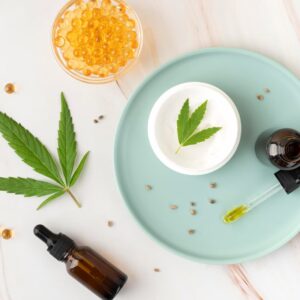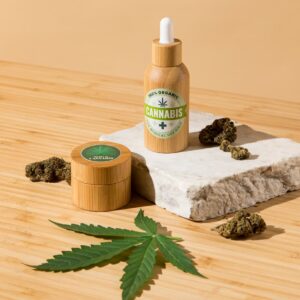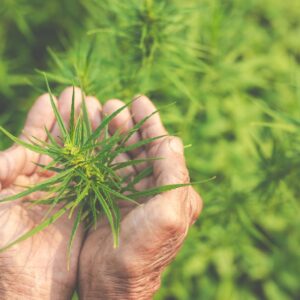In recent years, the world of cannabis edibles has expanded in ways that few could have predicted a decade ago. From infused chocolates and gummies to baked goods and beverages, these products offer an alternative route for people curious about cannabinoids like THC and CBD. As edibles have become more mainstream, so a need for clear, factual information about what they are, how they’re made, and what sets them apart.
This article takes an unbiased look at THC and CBD edibles, focusing on how they differ in formulation, regulatory classification, and why each type holds a place in today’s cannabis product landscape. Whether you’ve come across these products on a dispensary menu or in the latest wellness trend articles, understanding their distinctions is part of being an informed consumer.
What Are THC and CBD Edibles?
Cannabis edibles are any food or drink products infused with cannabinoids, the active compounds naturally found in the cannabis plant. The two most well-known cannabinoids are tetrahydrocannabinol (THC) and cannabidiol (CBD). While both come from the same plant family, their effects and legal classifications can differ.
- THC Edibles: Typically associated with recreational and certain medical use in legal jurisdictions, THC is the primary psychoactive compound in cannabis. Edibles containing THC are regulated, and their sale is permitted through licensed dispensaries in select states and countries.
- CBD Edibles: CBD is non-intoxicating and is more widely accepted in health and wellness markets. Products with hemp-derived CBD (with less than 0.3% THC) are legal in most U.S. states and Canada and appear in various consumer products like snacks, tinctures, and drinks.
How They’re Made: Ingredient & Infusion Methods
The process of creating THC and CBD edibles typically involves extracting cannabinoids from plant material and incorporating them into recipes. The difference lies in the source and concentration of these extracts.
- THC Edibles: These are crafted using either full-spectrum cannabis oil, distillate, or isolate, depending on the desired potency and flavor profile. THC extracts are decarboxylated (heated to activate the compound) before being blended into butter, oil, or directly into the food mixture.
- CBD Edibles: CBD can be derived from either hemp or cannabis plants but is most commonly sourced from hemp for legal reasons. Extraction methods like CO2 extraction are often used to produce a clean, concentrated oil that’s blended into edibles. CBD isolates and broad-spectrum extracts are also popular for creating products without detectable THC levels.
Effects and Onset Timing
One of the most notable differences between THC and CBD edibles is how they interact with the body’s endocannabinoid system (ECS), which regulates functions like mood, appetite, and immune response.
- THC Edibles: Known for their psychoactive effects, THC edibles typically produce a delayed onset, often 30 minutes to 2 hours after consumption, because the compound is metabolized by the liver before entering the bloodstream. According to research from the National Library of Medicine, this process converts THC into 11-hydroxy-THC, a compound considered more potent than inhaled THC.
- CBD Edibles: While they follow a similar metabolic path, CBD edibles don’t result in intoxicating effects. Instead, they interact with ECS receptors more subtly. A 2020 review in Frontiers in Pharmacology highlights CBD’s potential in modulating inflammatory responses and promoting balance within various systems of the body. (source)
Edibles Market Trends & Consumer Insights
The edibles sector has been one of the fastest-growing segments within the legal cannabis market. According to a 2023 report from Brightfield Group, U.S. cannabis edible sales reached over $3.6 billion, with gummies being the leading category by a significant margin.
A few notable insights:
- THC Edibles dominate in legal adult-use states, with demand driven by both recreational and therapeutic consumers.
- CBD Edibles have carved out a niche in wellness and natural supplement markets, particularly in regions where THC sales remain restricted.
These trends reflect changing public attitudes and regulatory shifts, both of which have made edibles more accessible and varied.
Labeling & Dosage Standards
Accurate labeling and responsible marketing have become priorities for producers, regulators, and dispensary operators. Packaging typically displays:
- The total cannabinoid content (e.g., 10mg THC per serving)
- Ingredients list
- Suggested serving sizes
- Legal disclaimers in compliance with regional laws
For CBD edibles, labels often include whether the product is full-spectrum, broad-spectrum, or isolate-based, giving consumers clarity about what’s inside.
Popular Types of THC and CBD Edibles
Some of the most common forms include:
- Gummies
- Chocolates
- Hard candies
- Cookies and baked goods
- Infused beverages
- Mints
Each product type appeals to different preferences, whether for taste, discretion, or dietary restrictions. Across dispensary menus, these edibles often appear alongside other infused items such as topicals and tinctures, offering variety for different consumer profiles.
Regulatory Differences Between THC and CBD Edibles
The legal status of edibles depends heavily on the type of cannabinoid they contain and the region in which they’re sold.
- THC Edibles are legal in U.S. states with adult-use or medical cannabis laws, but remain federally prohibited.
- CBD Edibles made from hemp (with less than 0.3% THC) were federally legalized in the U.S. through the 2018 Farm Bill, though individual states can impose additional restrictions.
Canada legalized both THC and CBD edibles under the Cannabis Act in 2019, regulating production, sales, and possession limits.
What Sets THC and CBD Edibles Apart?
THC and CBD edibles may look similar on the surface, available as sweets, snacks, and drinks, but the details behind their ingredients, effects, and legal standing set them apart. While THC edibles carry psychoactive properties and stricter regulations, their CBD counterparts, depending on the jurisdiction, are positioned more toward wellness and daily balance.
The evolution of the edibles market reflects broader conversations about cannabis normalization and the importance of factual, transparent product information. Whether browsing a dispensary’s offerings or scanning headlines on the latest cannabinoid trends, understanding the core differences between THC and CBD edibles adds clarity to an industry that’s continuously growing and diversifying.







